I Tested the Plug-and-Play Yamaha True X Bar 50A – It Delivers Some of the Loudest, Most Booming Bass I've Enjoyed at Home
The soundbar and subwoofer combo is a force to be reckoned with
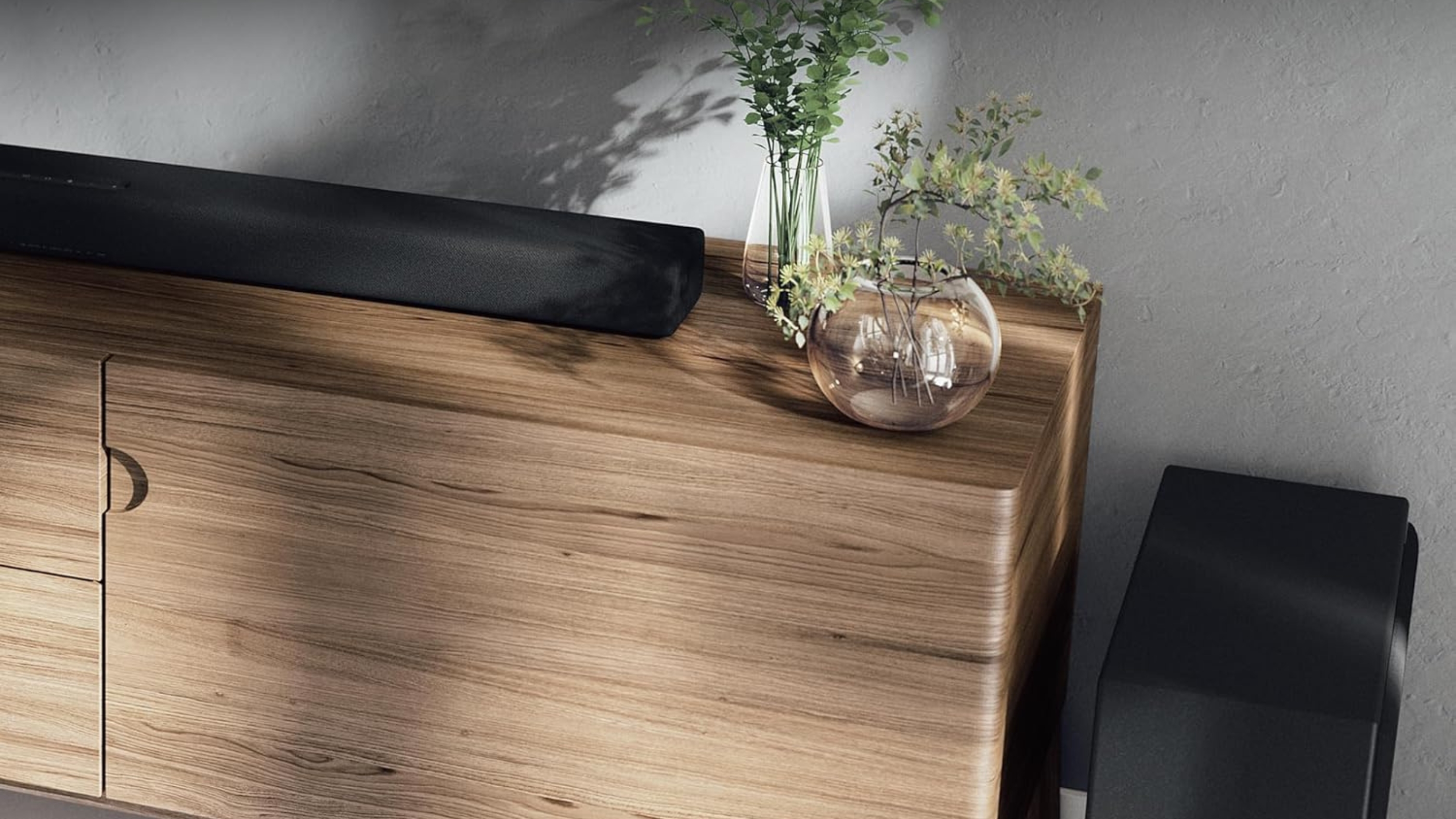
The bass is the star of the show here, thanks to a huge subwoofer that delivers high impact and depth to everything you watch. Bass-heavy music sounds inspired, as do high synths and rock music. For the price, I wasn't expecting to hear such detail in voices and scenes, but this clarity can be lost when a lot is going on.
-
+
Incredible bass
-
+
Massive volume capacity
-
+
Great depth for music, movies and TV shows
-
+
Every feature can be controlled using the soundbar remote
-
+
Plug-and-play, instant playback once set up
-
+
Voices are rich (when there isn't background noise)
-
-
Limited sound customization
-
-
Audio can sound muddied when there are lots of layers
-
-
App could be more user-friendly
-
-
No night/quiet mode
You can trust Homes & Gardens.
Yamaha has been producing sound equipment for decades, on everything from electric keyboards to guitar amps. The brand is no stranger to audio, and the True X Series is its flagship soundbar range.
That's why I was thrilled to test the Yamaha True X Bar 50A. It's a single soundbar paired with a separate, wireless (and quite large) subwoofer that delivers booming bass in addition to the soundbar's six built-in speakers.
To find out if it could be one of the best soundbars, I tested every feature and configuration available across our set list of scenes and songs. Here's what I learned.
The One-Minute Verdict
The Yamaha True X Bar 50A delivers some of the loudest, most resonant bass I've heard so far, thanks to a huge wireless subwoofer that adds fantastic depth to every scene and song.
It's ideal for those who love high impact – big booms, loud action, bassy music. It has the highest volume capacity of any soundbar we've tested at Homes & Gardens, reaching levels that can fill an entire house.
There's rich clarity in the vocals – but only as long as there isn't too much background noise. During busier scenes or layered songs, the sound can become a bit cloudy, with occasional distortion in the midrange.
The app could do with some improvement, too, and the sound customization settings are somewhat limited. But really, this is an impressive sound system, and it's helpful to be able to switch between sound modes depending on what you're listening to.
Design expertise in your inbox – from inspiring decorating ideas and beautiful celebrity homes to practical gardening advice and shopping round-ups.
If you're looking for more clarity, perhaps consider the less expensive Yamaha True X Bar 40A – which is the same soundbar but without the separate, bass-heavy subwoofer. Or, if you want to keep the bass and improve the clarity, go for the Sonos Arc Ultra.
Yamaha True X Bar 50A: Specifications
Control | Soundbar remote, TV remote, app, soundbar buttons, Alexa voice control |
Speakers | 7 |
Channel configuration | 2.1.2 |
Speaker configuration | Soundbar and subwoofer |
Dolby Atmos? | Yes |
Bluetooth? | Yes |
Supports | Apple AirPlay 2, Spotify Connect, Tidal Connect |
Soundbar width | 40 inches |
Yamaha True X Bar 50A: Setup
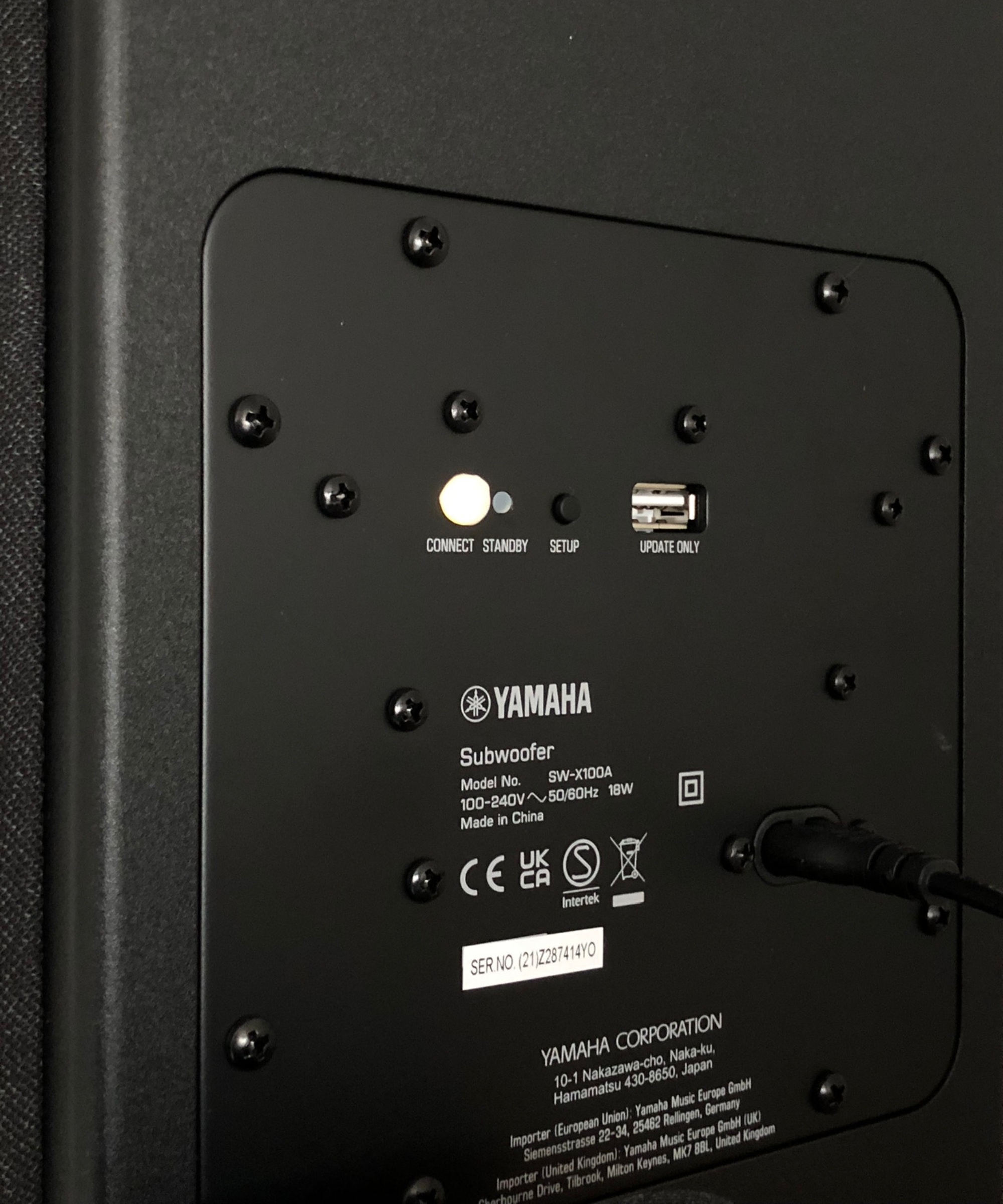
Only the power cable is needed for the subwoofer to instantly connect to the soundbar.
Setup was a mixed bag, with the soundbar and subwoofer being a quick, plug-and-play setup, but with connection to the Yamaha app proving frustrating.
Setting up the hardware is as simple as plugging the soundbar into the mains, then into the TV's ARC or eARC port using the included HDMI cable. If your TV doesn't have this port, Yamaha includes an optical cable to support older TVs.
The separate subwoofer is wireless, which makes this part of the setup incredibly painless. All you have to do is plug it into the mains, and it automatically connects to the soundbar, making it a seamless part of your smart home setup.
Sound started playing immediately, and I could feel the subwoofer's cone pulsing when I put my hand to it.
It was only when I tried to connect to the Yamaha Sound Bar app that it became a hassle. It prompted me to add a new soundbar, found the True X Bar 50A immediately, then guided me through the steps to get it connected. But after entering my WiFi password, it popped up with an error message, then the app wouldn't discover the soundbar at all.
I repeated this step countless times in the hopes that it would work, but it didn't, until days later, I was playing music from Spotify via Apple AirPlay and opened the Yamaha app, and the soundbar was fully connected with all of the settings available.
I'm not sure whether it was using Apple AirPlay that prompted it to work or if the app has its own issues, but I haven't seen reports of others struggling with this, so there's a chance that this issue is exclusive to my testing model.
The soundbar also comes with brackets and built-in holes if you want to mount it to your wall.
Yamaha True X Bar 50A: Design and Features
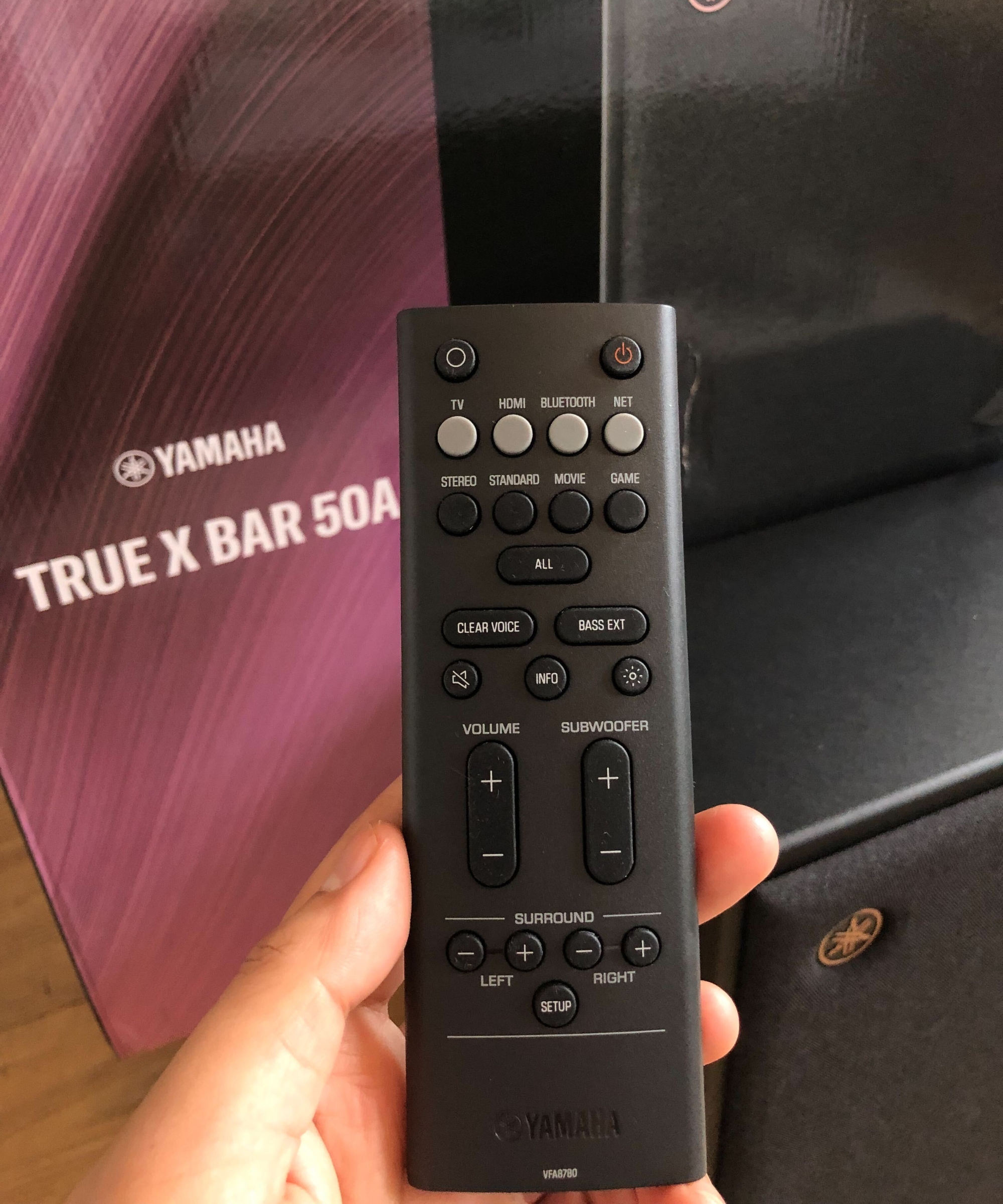
Every feature that's available on the app can be controlled using the included remote.
The Yamaha True X Bar 50A packs a punch considering its mid-range price, but is limited when it comes to sound optimization.
Dolby Atmos is powered by two up-firing speakers that help to create a more spatial, surround sound experience. As there are only two speakers, don't expect the same level of immersion as with premium soundbars (like the double-priced Sonos Arc Ultra), but it's a nice touch that isn't a given at this lower price point.
Bluetooth, Alexa, Apple AirPlay, Spotify Connect and Tidal Connect bring seamless integration with your other smart home gadgets, and I love that I can connect my iPhone to it using AirPlay even when the soundbar is turned off. It's convenient not to have to turn it on and pair the Bluetooth every time I want to stream music.
But I feel that this feature set is slightly let down by a subpar app and limited sound features.
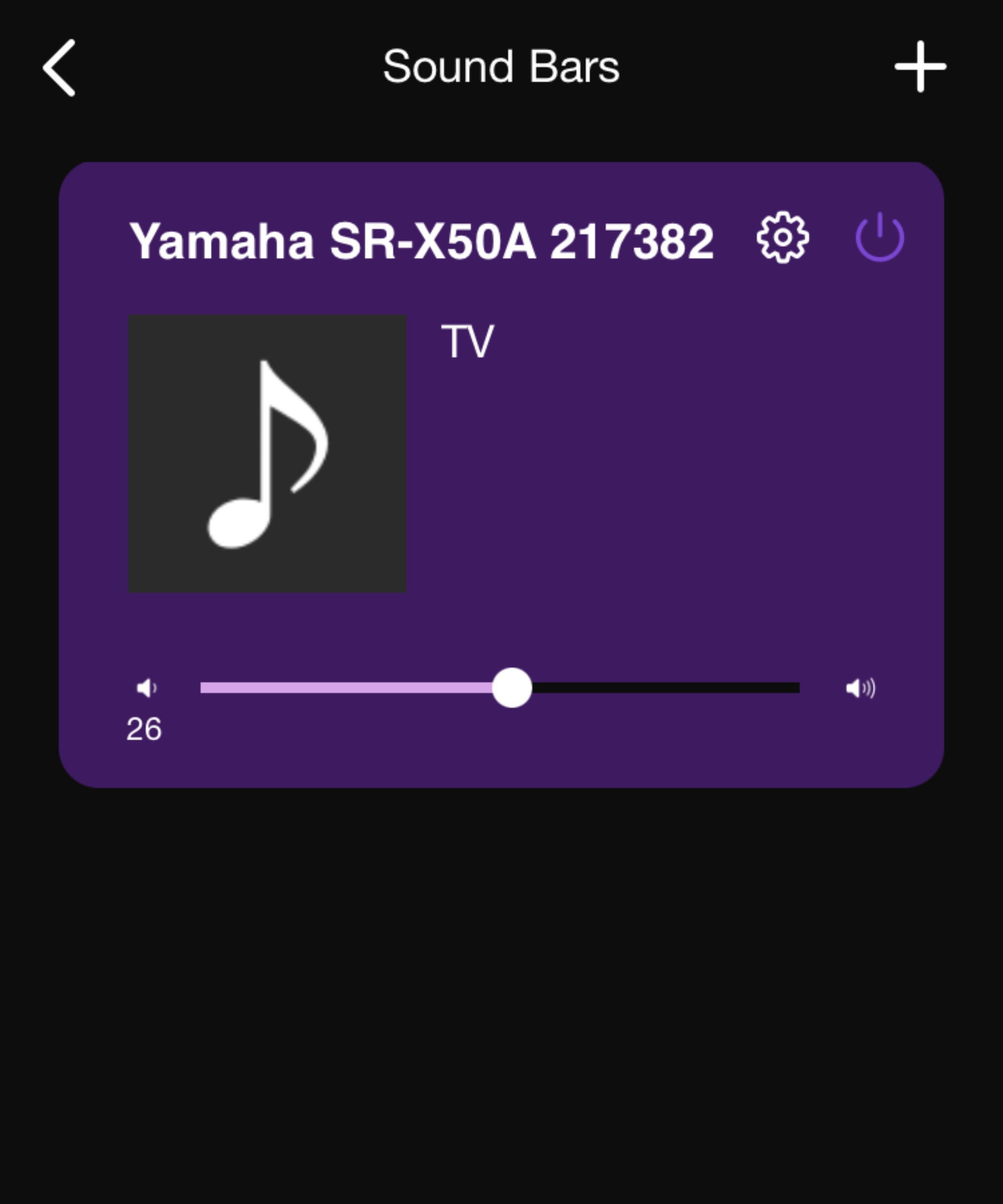
There are no immediate controls on the app other than volume, requiring you to click through multiple screens to get to the settings.
The app could be more user-focused. The main screen has no instant controls, so you have to click through multiple screens of lists to change any of the settings.
And more importantly, the settings are quite limited. There's no equalizer control to fine-tune the bass, mids and trebles. The only sound settings are:
- Clear Voice: To amplify vocals.
- Bass Extension: An on/off bass booster, with no sliding scale.
- Subwoofer Volume: Adjust the subwoofer volume from -10 to +10. If you unplug the wireless subwoofer from the mains, this setting will then control the built-in subwoofer that's inside the soundbar instead, which is useful.
- Sound Mode: Choose between Stereo, Standard, Movie, and Game.
Other soundbars have features such as night mode for quieter listening, surround sound optimization, and specific tuners for different frequencies, to really tailor the sound to your tastes and what you're watching. It seems a missed opportunity that Yamaha hasn't included these.
Also, the soundbar doesn't always show up on the app. It will never show up if it isn't turned on and playing something, which is a bit frustrating, as it's more helpful to be able to turn it on from your phone, but occasionally, even when it is playing something, the screen will be stuck on 'Searching'.
This isn't the end of the world, however, as there aren't any features on the app that aren't on the soundbar's remote. So if you're OK with keeping it nearby, you don't need to use the app at all.
The soundbar and subwoofer have a matte, fabric aesthetic in black, with subtle bronze logos and lettering. I'm a fan of this more muted design, and it'll be hard to find an interior design style that this doesn't easily blend into. The Yamaha logo on the corner of the subwoofer is a tasteful addition.
Yamaha True X Bar 50A: TV and Movies
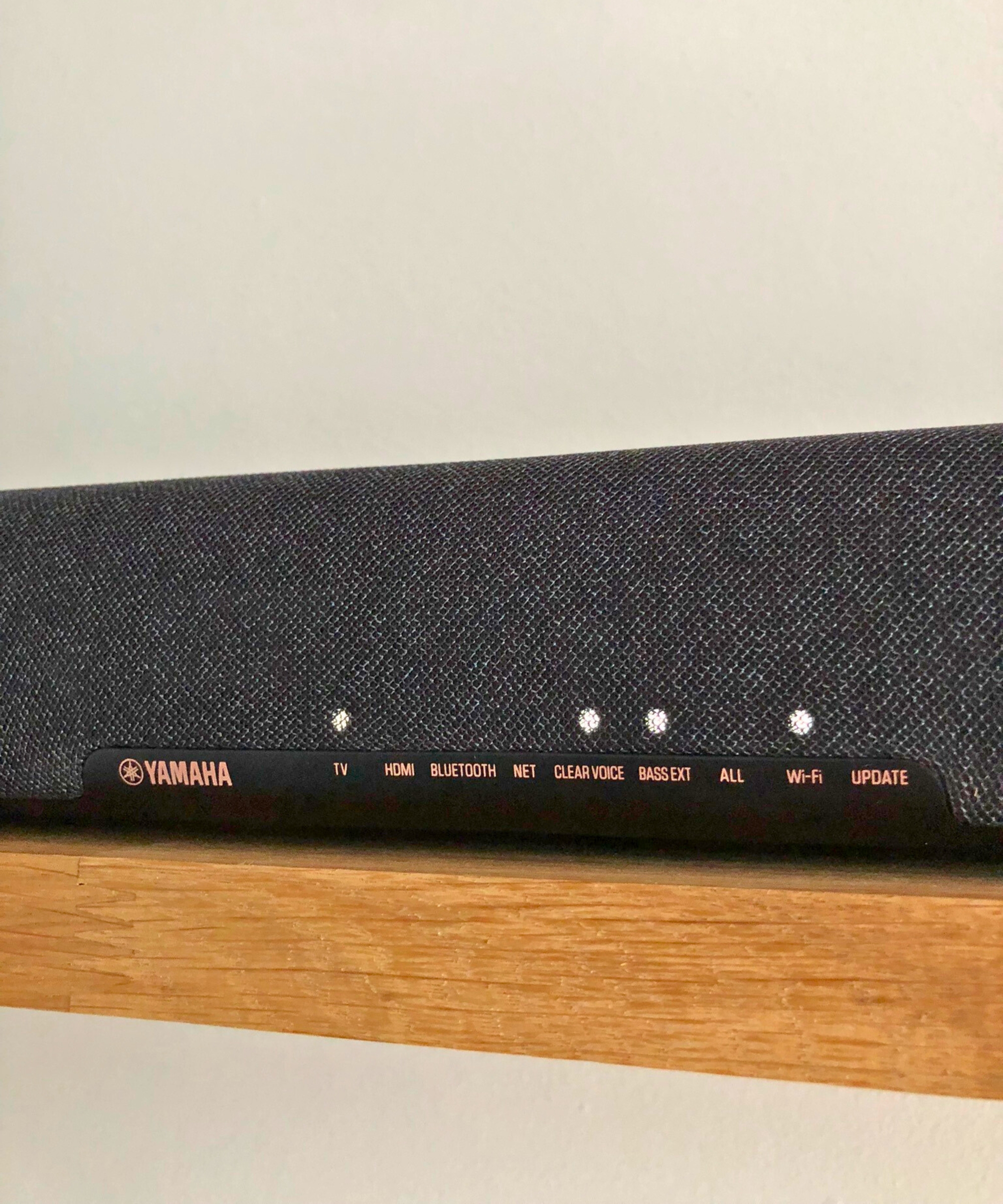
Loud booms, great depth, and occasional muddying of layers are the most notable traits after watching our set list of TV shows and movies.
The Yamaha True X Bar 50A produces loud, bassy, and resonant sound across different genres. Voices and details are clear most of the time, but can become muddied during busy scenes. Where the True X Bar 40A shines in its clarity, the 50A excels in its depth.
During Harry Potter and the Deathly Hallows: Part 2, the action sequences sounded great, the vocals were clear (even with fire raging and furniture clashing around), but sometimes the vocals feel like they’ve been layered on top of the background noise, rather than being a part of the scene.
The booms can sometimes sound a little muffled, and while it still largely sounded quite impressive (and a huge upgrade from my usual TV), it didn’t always feel like every element was the right volume.
I changed the sound setting to ‘Movie’ (fitting for my movie room) and the score sounded more dramatic and full. The spatial surround sound felt more realistic: I could hear noises travelling from left to right, and the difference in impact between near and far sounds was beautifully accurate. Impacts sounded tighter, layers were less muddied, and the bass was exceptional (you'd hope so, considering how big the subwoofer is).
I again felt this booming, resonant audio during Our Planet II. It was gorgeous. David’s voice comes through clearly, even with dramatic music, crashing waves, and torrential rain. You can’t pick up fine details with this as you do with the Sony BRAVIA Theater Bar 8, like individual wings flapping or leaves rustling, but as a whole, this is an excellent soundscape that creates the inspiring experience that such a large-scale nature doc calls for.
However, there can occasionally be muffling when there are loads of layered sounds, like huge swarms of fish swimming together. I noticed this when watching Arrested Development too, with music, dialogue, and narration all happening at once, I noticed that each element wasn’t as prominent as when there’s less happening.
But when it’s just dialogue, each voice sounds fantastic. There's so much depth and richness in each word – and the music really shines. The Arrested Development pilot is great for this, as the jazz soundtrack has different instruments that layer on top of the characters' vocals, and thanks to the subwoofer’s depth, it's full of color (more on music quality below).
Breaking Bad demonstrated further the vocal clarity, picking up the rasps and whispers between words. But in this scene, other soundbars (most notably the Sony BRAVIA Theater Bar 8) showed off their surround sound ability with the toy car whirring in the background and to the side, but with the 50A, it sounded like it was coming from the same place.
The subwoofer showed itself off here, too. As soon as a punch was thrown, it boomed through the room, not at all distorted, and it added stunning depth to human voices.
Yamaha True X Bar 50A: Music
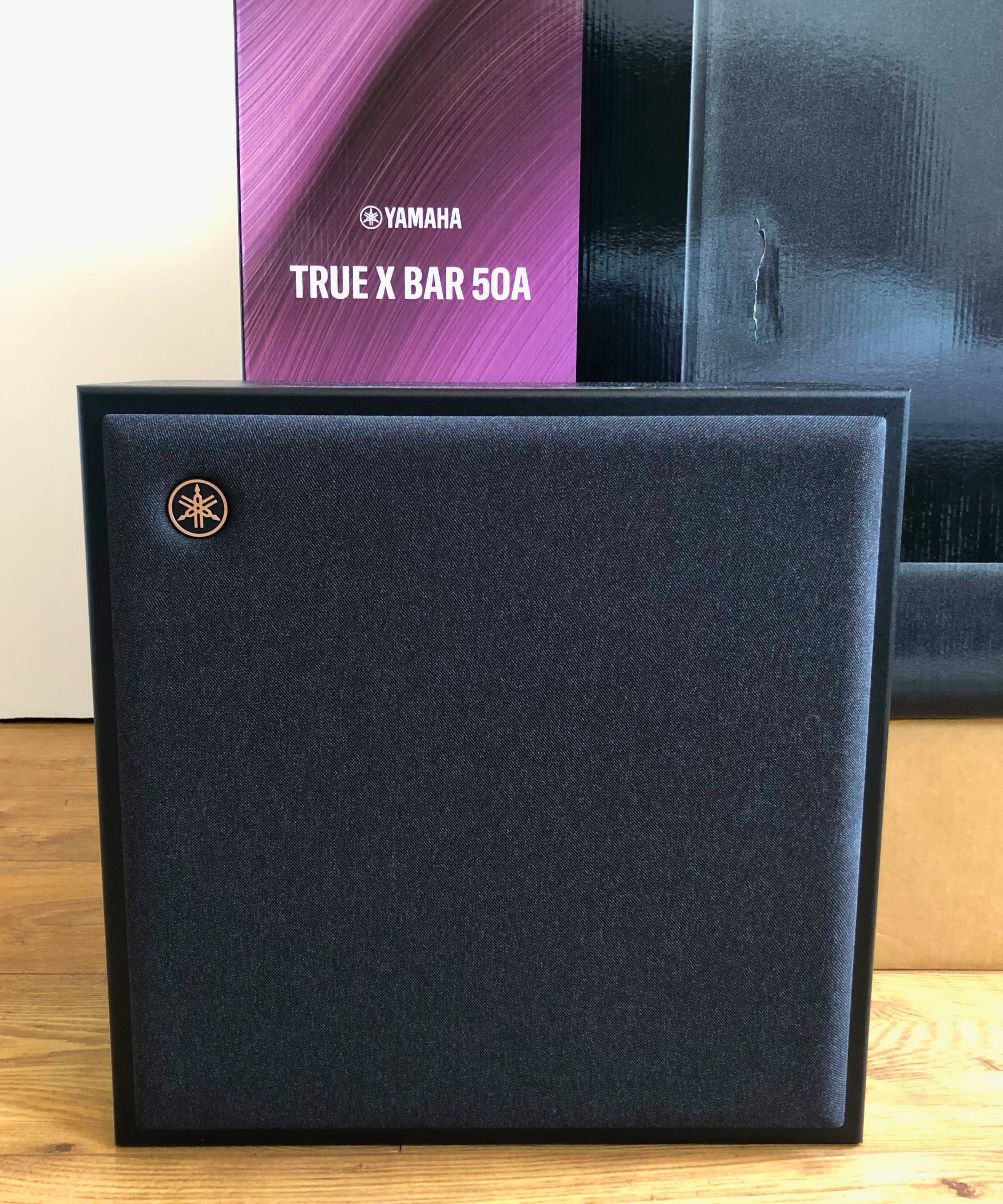
I positioned the subwoofer in three spots during testing: Above the TV on a shelf, below the TV on the floor, and next to where I sit.
Listening to music showed off the True X Bar 50A's incredibly high volume capacity, booming bass, and incredible depth, but clarity is lost during tracks with variation among the highs, mids, and lows.
It's no surprise that the bass-heavy Angel by Massive Attack sounded extraordinary. The bass resounded through the room, and when I turned it up to about 30% volume, I felt the vibrations from beneath me (also owed to angling the soundbar correctly).
Three Drums by Four Tet sounded whole and floaty, as it should. You can hear the subtle high synths, the drums fading from soft to impactful. But it wasn't as crisp as I’ve heard with other soundbars, and there’s a slight crackle when all the layers are in full swing.
When turning it up past 50% volume, the roar was intensely amazing, but a lot of clarity was lost. I can’t imagine many people would need the volume to go that high (seriously, it's loud), but if you do, this is a great choice for your music room – just don’t expect high fidelity at high volumes.
It's important to note that because there’s so much volume to play with, at the quieter levels, pressing the volume button once drastically increases the volume, meaning it can be hard to pinpoint the right levels if you’re listening late at night or if you have neighbors who’d be disturbed by loud noises.
Ramble On by Led Zeppelin sounded awesome. Hearing it gave me a big grin – it's definitely fitting for such a longstanding musical instrument brand to have engineered excellent rock music with their soundbar.
Big Thief's Simulation Swarm displayed a beautiful marrying of the low and high frequencies. The bass is stronger than I’m used to with this track, but when Adrianne’s vocals came in, they sounded stunning together.
Later in the track, where the midrange is more prominent, it no longer sounds as clear. This seems to be where this system is lacking: The midrange can add scratchiness, but this pairs well with guitar sounds, likely explaining why Ramble On sounded so good.
There was distortion again in Sade's Feel No Pain – not in the bass, surprisingly, but when Sade’s vocals come in, combined with the other instruments. It doesn’t sound nearly as good as I’ve heard in other soundbars like the Samsung HW-QS750F.
On The Weather Station's Robber and Matthew Halsall's An Ever Changing View, I noticed the lack of space. Listening on the Sonos Arc Ultra, you’d hear the moment after a drum is hit and the slight reverberation that comes off it. With the 50A, there’s more of a wall of sound (not the Phil Spector kind…), and these subtler details aren’t picked up as clearly.
But clarity isn't the 50A's strong suit. Instead, its big, loud subwoofer produces depth and impact, demonstrated best by Erykah Badu's Didn't Cha Know. That opening drum beat is one of the most enjoyable moments to experience with proper bass, and the 50A delivers it flawlessly.
And surprisingly, the 50A's highs come through stunningly. Playboi Carti's Location and Cocteau Twins' Pitch The Baby sounded amazing, with the synth-y trebles and high-pitched vocals ringing throughout the room gorgeously.
It seems as if songs with less variety come through stronger with this system. High highs sound good together, bassy songs sound good, but when there’s lots going on it can get a bit muddied.
Yamaha True X Bar 50A: Price
The Yamaha True X Bar 50A costs $699.95 at full price but is frequently discounted to as low as $400 (at the time of writing, it's $419.95).
You can buy the Yamaha True X Bar 40A for around $399-$500, depending on promotions, and it's the same soundbar model but without the subwoofer. I tested both models back-to-back and the sound quality is drastically different. The 50A has more depth and volume, while the 40A is clearer. If you can't afford the subwoofer or don't have the space, the 40A is a great alternative.
There's also the Yamaha True X Speaker 1A for $179.95 each. These are surround speakers, so if you place them either side of where you sit, you'll get realistic, multi-directional sound.
Or, to achieve surround sound with one buy, the Samsung HW-QS750F (costing $749.99 at Best Buy) is the best surround-sound soundbar we've tested, full of advanced customization settings to tailor the sound to your tastes. It has two surround speakers, a subwoofer, and a soundbar.
How I tested the Yamaha True X Bar 50A
I tested the Yamaha True X Bar 50A in the largest room of my home, with a mix of hard surfaces and soft furnishings for accurate, real-world test results. I test every soundbar with the same list of scenes and songs to standardize testing across every model.
During each scene and each song, I tested every sound setting available to fine-tune the best sound quality, so that the review accurately represents what the soundbar is capable of. I positioned the subwoofer above the TV, below the TV, and next to where I sit with each test, too, to observe the bass distance.
I tested the 50A back-to-back with the Yamaha True X Bar 40A, to precisely compare what you get for each price. There's around $200 between them, with the only difference being the inclusion of the wireless subwoofer, and I wanted to be able to assess whether it's worth saving the $200 while still enjoying great sound.
For more home tech goodness, see our tested guides of the best robot vacuums and the best video doorbells.

Dan is the Home Tech Editor for Homes & Gardens, covering all things cleaning, sound, smart home, and air treatment across the Solved section.
Having worked for Future PLC since July 2023, Dan was previously the Features Editor for Top Ten Reviews and looked after the wide variety of home and outdoor content across the site, but their writing about homes, gardens, tech and products started back in 2021 on brands like BBC Science Focus, YourHomeStyle and Gardens Illustrated.
They have spent more than 400 hours testing and reviewing vacuums, soundbars and air purifiers for Homes & Gardens.
Dan has a BA in Philosophy and an MA in Magazine Journalism. Outside of work, you'll find them at gigs and art galleries, cycling somewhere scenic, or cooking up something good in the kitchen.
You must confirm your public display name before commenting
Please logout and then login again, you will then be prompted to enter your display name.
